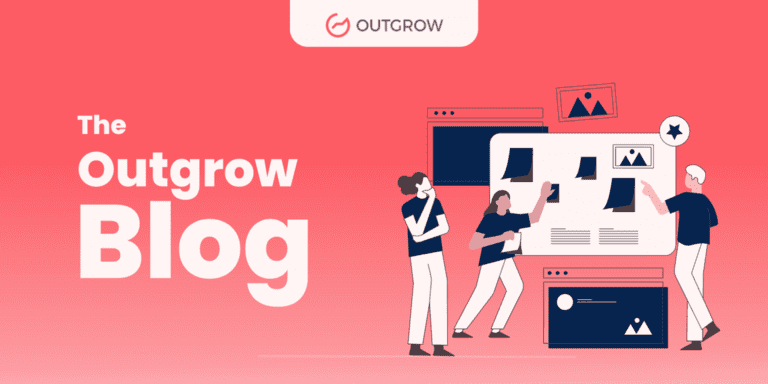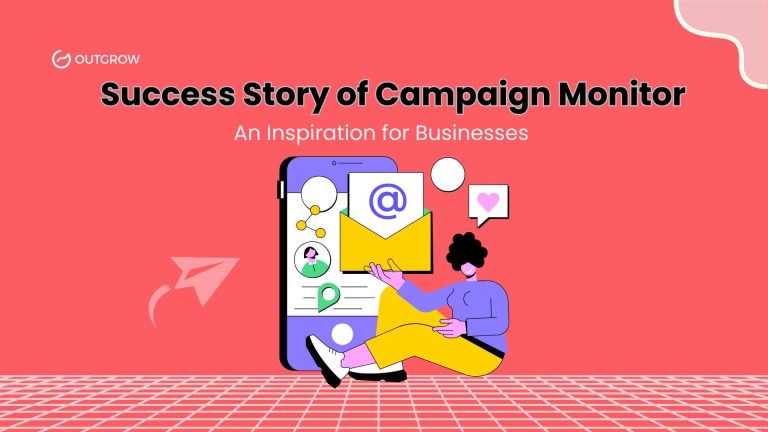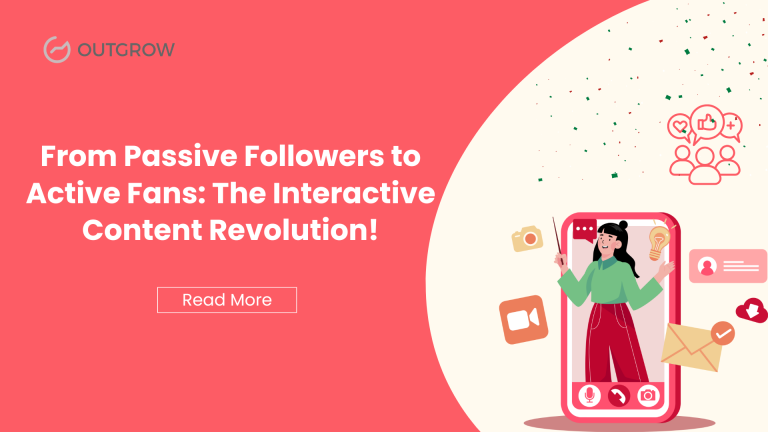Polls and Surveys: Boost Engagement With 7 Real Examples That Work
Table of Contents
Want to skyrocket your engagement rates? You need to start leveraging polls for engagement and surveys for marketers. They’re not just feedback tools—they’re engagement goldmines that can transform how your audience interacts with your brand.
In this guide, you’ll discover how to create polls that people want to answer, see real examples that drove massive results, and learn how to turn those insights into business growth. So let’s dive in!
What Are Polls and Surveys? (And How Are They Different?)
Before diving into strategies, let’s clarify what we’re talking about:
Polls are quick, single-question interactions designed for high participation rates. They typically offer limited response options (often just 2-4 choices) and are perfect for social media, emails, or website widgets. The primary goal of polls for engagement is to spark interaction and discussion.
Surveys are more comprehensive sets of questions designed to gather detailed insights. They can include multiple-choice questions (multiple-ranking scales, open-ended responses) and typically require more time to complete.
The key differences:
- Length: Polls are short (usually one question), surveys can be multiple questions
- Depth: Polls gather surface opinions, surveys collect comprehensive feedback
- Analysis: Poll results are simple to interpret, but survey data often requires more analysis
- Purpose: Polls primarily drive engagement, surveys primarily collect insights (though both can do both)
Outgrow’s platform allows you to create both types of interactive content with equal ease, giving you flexibility based on your specific goals.
Why You Should Be Using Polls for Engagement
You know that feeling when someone genuinely asks for your opinion? That’s the magic of polls for engagement. When you ask your audience what they think, you’re telling them their voice matters.
But the benefits go way beyond making people feel good. You’re creating a two-way conversation with your audience instead of just talking at them. The stats don’t lie: interactive content generates twice the conversions of passive content. Posts with polls see higher engagement rates on social platforms.
That’s a game-changer for your content strategy!
Creating Surveys Your Audience Will Actually Complete
You don’t need complicated surveys that nobody finishes. Here’s how to create polls/surveys that people genuinely want to answer:
1. Keep it short and sweet
Your audience is busy. They won’t complete your 20-question survey while scrolling through social media. For social polls, stick to 1-2 questions. For email surveys, keep it under 5-7 questions unless you’re offering some serious incentives.
2. Ask questions that matter to them
Your audience should immediately think, “Yes, I have thoughts on this!” Make your questions relevant to their interests and pain points.
3. Provide instant gratification
People want to see how their answers compare to others.
4. Inject your personality
Generic polls for engagement get ignored. Add your unique brand voice to make your surveys for marketers stand out. Instead of “Which option do you prefer?” try “Team A or Team B? Defend your choice in the comments!”
Real-World Examples You Can Learn From
Looking for inspiration? Check out these brands that turned simple polls for engagement into engagement machines:
1. InfluenceCréation Got 94K+ Leads and 56% Conversion With Outgrow
Outgrow helped Gala InfluenceCréation build an engaging, interactive poll that effectively captured audience opinions.
The poll allowed users to vote transparently for their favorite creator, boosting engagement and providing clear insights.
Why it worked: It solved a real customer pain point, garnered an impressive number of leads, increased website traffic, and achieved a remarkable conversion rate.
2. Airbnb’s Travel Preference Polls
Airbnb regularly runs polls with simple travel questions:
“Mountains or beach?” OR “Early flight or night owl?”
They use these responses to guide their content strategy and feature destinations that align with follower preferences.
Why it works: Low effort to participate, and the results help Airbnb understand its audience better.
3. Sephora’s Beauty Insider Community Polls
Sephora regularly uses polls for engagement within its Beauty Insider Community. They ask questions like “What’s your top skincare concern?” or “Prefer splurging on foundation or mascara?”. These polls drive thousands of responses and comments.
Why it works: The polls tap into their audience’s passion for beauty products while providing valuable market research data.
4. Starbucks’ Seasonal Flavor Voting
Starbucks engages its customers by running polls to vote for their favorite seasonal drinks. In their “Nominees for Best Seasonal Drink” campaign, customers could choose between popular options like Pumpkin Spice Latte and Peppermint Mocha. This approach generated massive engagement, gave customers a sense of ownership.
Why it works: People love sharing opinions on favorites, especially about cozy, seasonal treats. Creates anticipation and emotional connection to limited-time products.
5. Netflix’s “Choose Your Own Adventure” Interactive Content
Netflix has pioneered interactive content with shows like “Bandersnatch,” where viewers decide what happens next. While more sophisticated than a standard poll, it demonstrates the power of giving audiences a choice.
Why it works: It transforms passive viewing into an active experience, dramatically increasing engagement time.
6. BuzzFeed’s Viral Quizzes
BuzzFeed has built an empire on interactive content, with its quizzes and polls generating millions of shares. Their “Which [Character] Are You?” format has been replicated countless times.
Why it works: These polls tap into identity and self-discovery, topics people are naturally curious about.
7. HubSpot’s State of Marketing Report
HubSpot’s annual State of Marketing Report begins with surveys for marketers that collect insights from thousands of professionals. They transform these survey results into highly shareable content pieces that generate leads year-round.
Why it works: By sharing the aggregated data, they provide genuine value to their audience while positioning themselves as industry leaders.
Which Platforms Work Best for Your Polls for Engagement
Different platforms offer different polling capabilities. Here’s how to maximize each one:
Instagram Stories gives you the simplest polling feature with its binary question sticker. Use the slider and question box for more nuanced feedback.
Pro tip: Use the countdown sticker alongside polls to create urgency around product launches that your audience voted on.
Twitter/X
Twitter polls can include up to four options and run for up to seven days. They’re perfect for sparking debates and increasing your reach through shares.
Pro tip: Ask questions that encourage people to defend their choice in the comments.
LinkedIn polls perform exceptionally well because professionals love sharing their expertise. These polls can run for up to two weeks.
Pro tip: Industry-specific questions like “What’s your biggest challenge with [industry topic]?” typically get the highest engagement.
Your Website & Email (With Outgrow)
While social media polls are great for quick hits, embedding Outgrow polls and surveys for marketers on your website or in email campaigns delivers much richer data and higher completion rates.
Benefits of Using Polls and Surveys for Business
Improved Engagement
Nothing kills engagement faster than one-way communication. Polls for engagement transform passive readers into active participants. When you ask for someone’s opinion, you’re inviting them into a conversation rather than talking at them.
Data-Driven Decision-Making
Gut feelings are great, but data is better. Instead of guessing what features your customers want, ask them directly. Use polls to determine what topics your audience wants to learn about instead of creating content no one requested. Regular feedback through surveys helps identify friction points in your customer journey that you might have missed.
Personalization
The future of marketing is personalization, and you can’t personalize without data. Use survey responses to create detailed customer segments based on preferences, pain points, or demographics. Customize follow-up emails based on poll responses.
Lead Generation
Polls and surveys aren’t just feedback tools—they’re powerful lead generation engines. Consider offering valuable insights in exchange for contact information. Personalized results like “Get your custom results sent to your inbox” drive email submissions. Benchmark reports, “See how your answers compare to industry benchmarks,” is a compelling reason for someone to provide their email.
The Psychology That Makes Your Polls Work
Understanding the psychological principles behind effective polls helps you create better ones:
The IKEA Effect
People value things more when they help create them. By involving your audience in decision-making, you’re triggering the same psychological principle that makes people love their IKEA furniture more than expensive pre-built alternatives.
Social Validation
Your audience wants to know how their opinions compare to others. It’s why “X% of customers agree” is such a powerful marketing message. Polls satisfy this curiosity instantly.
Cognitive Ease
Questions that require minimal thinking get more responses. That’s why simple “this or that” polls typically outperform complex surveys for marketers.
Outgrow’s intuitive interface helps you design surveys that hit this sweet spot!
Tools to Make Your Polling/Survey Life Easier
You don’t need expensive market research to run effective polls or surveys. Here are some accessible tools to consider:
- Outgrow – The premium choice for marketers who want interactive polls and surveys that actually convert. The no-code platform lets you create everything from simple polls to complex interactive calculators and quizzes without any technical knowledge.
- Google Forms – Free and integrates with other Google products
- SurveyMonkey – The classic option with reliable features
- Native social media polls – No additional tools required, but limited in functionality
Why Outgrow Should Be Your Go-To for Surveys for Marketers
What sets Outgrow apart is its focus on conversion. While most survey tools just collect data, Outgrow is designed to turn respondents into leads or customers through personalized recommendations and offers based on their responses. The platform’s analytics tie directly to your marketing funnel, showing you exactly how your polls for engagement impact your bottom line.
Creating a survey with Outgrow
1. Log in to your Outgrow account, click “Form/Survey”, and choose a layout or select a premade template from our library.
2. You’ll enter the Outgrow builder, where you can set up the welcome screen, questions, lead form, and results page.
3. Edit or hide the welcome screen; customize text, design, and layout as needed.
4. Set up the lead form: choose fields and placement, or hide it for anonymous surveys.
5. Add and customize questions using different formats; adjust settings like mandatory responses or advanced design options.
6. Design the thank you page with media, CTAs, and other elements.
7. Fine-tune your survey by modifying design settings—disable auto-progression, show visitor count, add animations, etc.
8. When ready, click “Publish” to go live.
Also Learn: How to create a Poll using Outgrow
Mistakes You Need to Avoid
Even simple polls can go wrong. Watch out for these common pitfalls:
1. Asking leading questions
“How amazing was our new product?” isn’t going to get you useful feedback.
2. Overwhelmed with options
Choice paralysis is real. Keep options limited and clearly differentiated.
3. Collecting data you never use
Nothing frustrates customers more than being asked for input that’s clearly ignored.
4. Poor timing
Avoid sending surveys for marketers during busy times like Monday mornings or Friday afternoons when attention spans are at their lowest.
Converting Respondents Into Community Members
The ultimate goal isn’t just collecting answers—it’s building relationships. Here’s how to leverage polls and surveys for long-term growth:
1. Close the feedback loop
Share the results with participants and tell them what actions you’re taking based on their input. “You asked for more video tutorials, so here’s our new YouTube series!”
2. Create content from poll results
Use popular responses as inspiration for blog posts, social media content, or email newsletters. People love seeing content that they helped inspire.
3. Build a VIP insights panel
Invite your most engaged poll participants to join an exclusive feedback group.
Polls vs Surveys: When to Use Each
Choosing between polls for engagement and surveys for marketers depends on your specific goals. Here’s when to use each:
When to Use Polls:
Use polls when you want to:
- Boost social media engagement quickly
- Gather quick opinions on a simple topic
- Start conversations around your brand
- Add interactive elements to emails or websites
- Test initial interest in a concept
- Create shareable content
When to Use Surveys:
Use surveys when you need to:
- Gather comprehensive customer feedback
- Conduct market research
- Generate qualified leads
- Develop detailed buyer personas
- Evaluate satisfaction with products/services
- Collect testimonials and reviews
Your Next Steps: Start Asking Better Questions
The biggest mistake you can make isn’t creating bad polls—it’s not creating polls at all. Your audience has opinions they’re dying to share with you. All you need to do is ask.
Start small this week. Create a simple poll using Outgrow. Include a one-question survey in your next email. See what happens. The insights and engagement will be worth it.
Remember: two-way conversations make you stand out in a digital world overflowing with one-way content. Polls for engagement and surveys for marketers aren’t just engagement tactics—they’re relationship builders.

FAQs
Sakshi is a digital marketing enthusiast passionate about connecting brands with audiences. With a background in content strategy and social media, she loves turning trends into actionable strategies. Outside of work, you’ll find her reading a book or hunting for the perfect cup of coffee.




